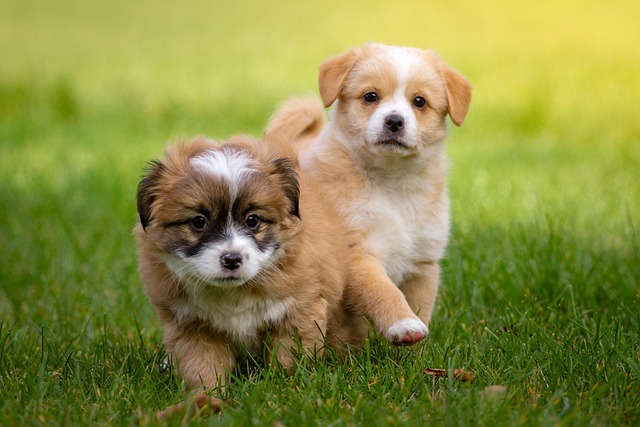
How can I tell if my dog's heatstroke is serious
Let’s be real: It’s a sticky August morning in Los Angeles, and you took your 2-year-old Golden Retriever, Max, for a walk a little later than usual
Many new puppy parents find themselves staring at their fluffy companions, wondering when that first trim is necessary. It’s a common question, especially when those soft curls start to mat or that fuzzy coat begins to look unkempt after playtime in the backyard. You might even catch yourself reaching for the scissors, only to pause—afraid of doing more harm than good. That hesitation is a good sign; it means you’re thinking about your pup’s well-being first.
Puppies, like human babies, have delicate skin that’s still developing in their early weeks. Most vets and groomers agree that the first puppy haircut shouldn’t happen before they’re 12 to 16 weeks old. Why? Their skin is thin, and their hair follicles are still strengthening during this period. Trimming too early can irritate sensitive skin, leading to redness or even infections. For example, a friend’s golden retriever puppy had a bad reaction after a trim at 10 weeks—tiny bumps appeared, and the vet traced it back to the follicles being disturbed too soon. Waiting until their immune system and skin barrier are stronger makes all the difference.
 Before scheduling that first puppy haircut, take time to prep your little one for the experience. Start by gently brushing their coat daily—this not only prevents tangles but also gets them used to having their body touched. Use a soft bristle brush and reward them with a tiny treat afterward; positive reinforcement like this helps them associate grooming with good things. If you live in an apartment, this daily routine also keeps loose hair from piling up on your couch or carpets, making cleanup easier for everyone in your building.
Before scheduling that first puppy haircut, take time to prep your little one for the experience. Start by gently brushing their coat daily—this not only prevents tangles but also gets them used to having their body touched. Use a soft bristle brush and reward them with a tiny treat afterward; positive reinforcement like this helps them associate grooming with good things. If you live in an apartment, this daily routine also keeps loose hair from piling up on your couch or carpets, making cleanup easier for everyone in your building.
When the time comes, keep the first trim simple. Avoid clippers altogether if possible—sharp scissors can nick skin, and loud buzzing sounds might scare them. Instead, use blunt-tipped scissors to trim only the longest, most unruly bits, like around the paws or belly where mats often form. A local groomer in Portland told me she always starts with a “puppy intro” session: just 10 minutes of gentle brushing and treats, no cutting, to build trust. This small step can turn a stressful event into a positive one.
Don’t forget the basics that keep your pup—and your community—happy. Before heading to a groomer, make sure they’re up to date on core vaccines like distemper and parvovirus; most states require this for public spaces, including grooming salons. While you’re at it, keep those poop bags handy during post-grooming walks—no one appreciates a messy lawn, and it’s the law in most neighborhoods. And remember, if your pup gets anxious during the process, stay calm and offer reassurance. Yelling or scolding will only make them fear future sessions; patience is key.

Let’s be real: It’s a sticky August morning in Los Angeles, and you took your 2-year-old Golden Retriever, Max, for a walk a little later than usual

You're enjoying a summer afternoon at the park when you notice your dog has stopped panting and appears disoriented - their gums are bright red

Let’s paint the picture: You’re in your Denver apartment, watching your 4-year-old Boston Terrier, Ruby, plop down mid-play session with her favorite toy

Many dog owners notice their pets nails seem shorter after regular walks,but how much does this daily activity actually help?The answer depends on where you walk—concrete sidewalks or asphalt streets gently file nails as a dog's paws hit the ground

Most dog owners notice their pup scooting across the carpet at some point, but few connect it to impacted anal glands. These small sacs near a dog’s rectum secrete a scent for marking territory

Most vets agree that regular dog teeth cleaning is key to avoiding painful dental issues later. For healthy adult dogs, a professional cleaning at the vet’s office every 12 to 18 months usually works well.